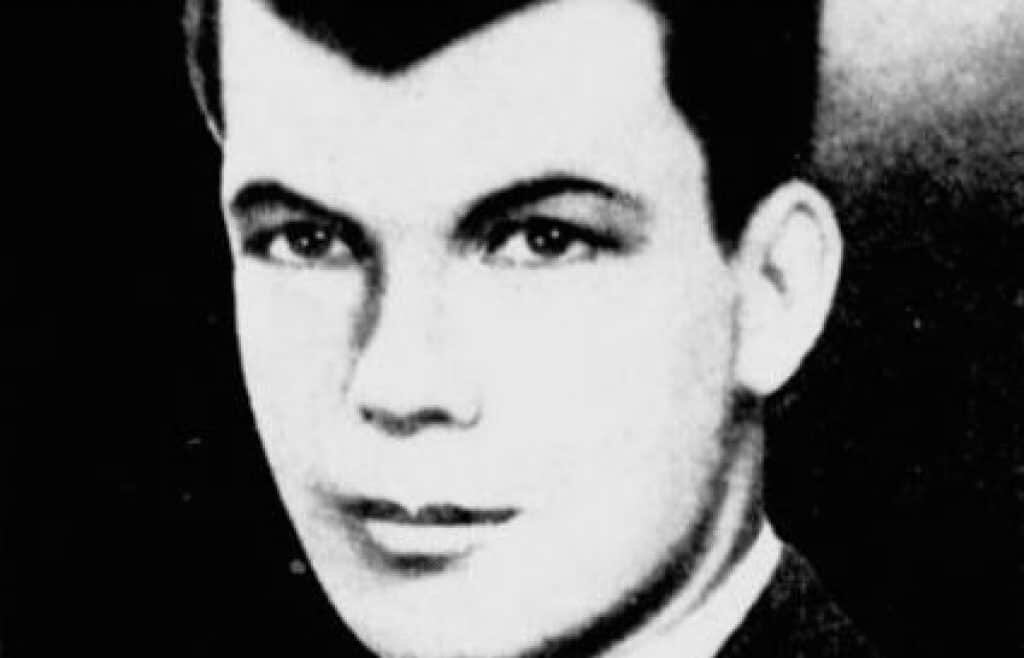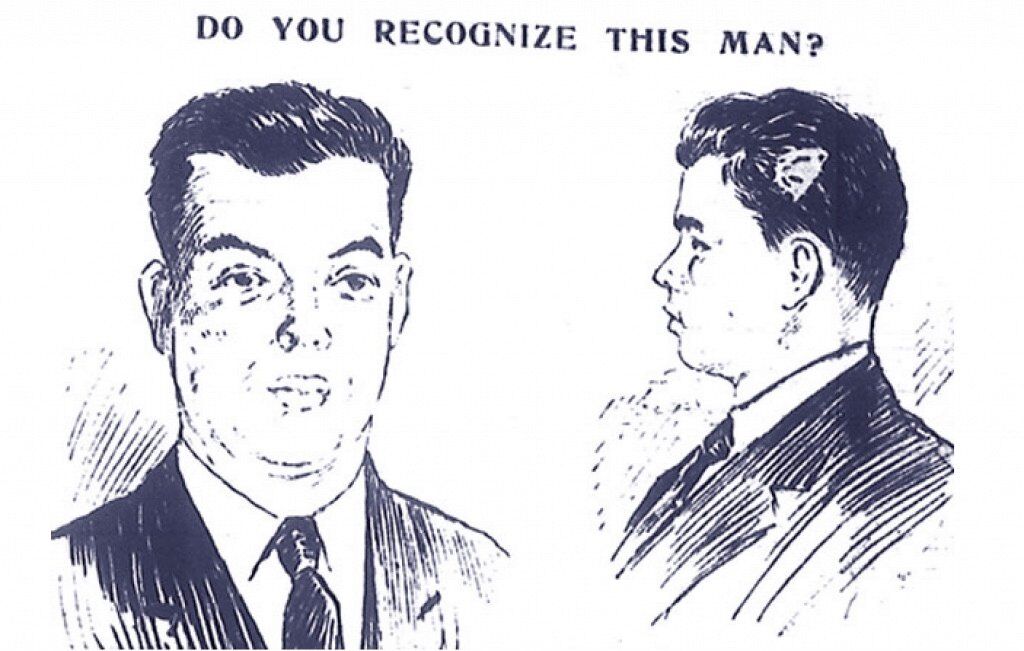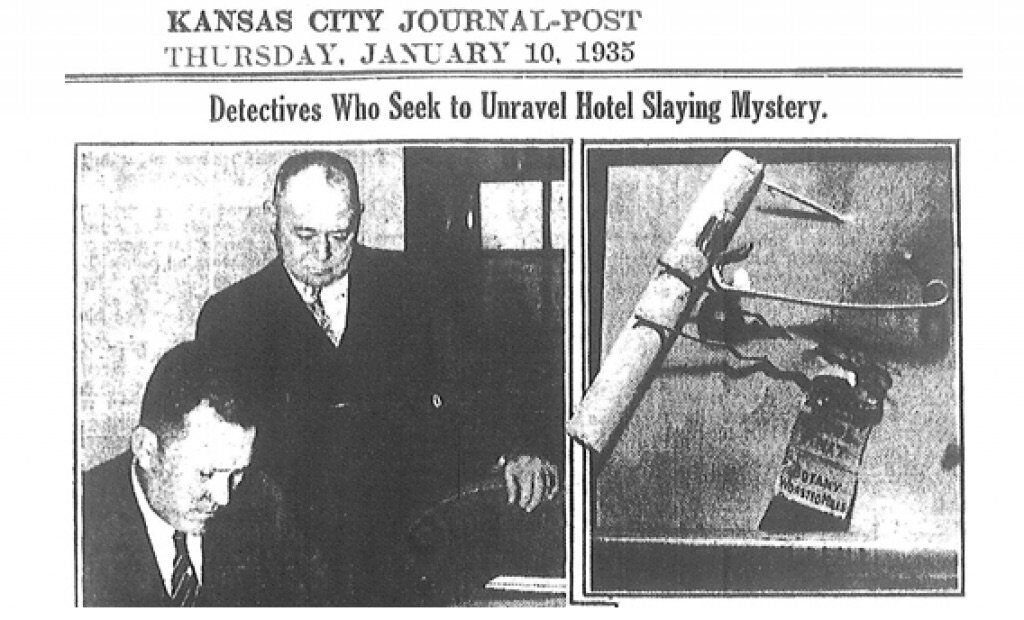In the first week of January 1935, a murder occurred that spawned one of the strangest mysteries in history. It began when a tall man with a facial scar and a cauliflower ear entered the Hotel President in Kansas City, Missouri. He asked for a single room several floors up for one night. Just like any other usual hotel guest, he paid a fee and signed the register under the name of Roland T. Owen. Even though the man brought no luggage with him, bellboy Randolph Propst accompanied him to room 1046. Little did he know, the crime that was about to unfold would make the hotel famous.

On the way to the room, Owen chatted with Propst. Owen told him that he went to another hotel, the Muehlebach, but he thought the cost was too high there. Once the pair reached the room, Owen removed several items from his pocket: a comb, a toothbrush, and a brush. He put all of them into the bathroom, and both men left the room together. Owen took the key from the bellboy, and he left the hotel to go out.
“Leave the Door Unlocked”
Later on that day, a maid went to clean room 1046. Owen had returned to the room by then, and he allowed the maid inside to clean. He did insist that the door remain unlocked as he was expecting a visitor. The maid did as Owen instructed, but she did notice a few things. He had drawn the curtains, and a single lamp provided all the illumination in the room. It was enough for her to see that Owen seemed nervous or anxious.
You May Also Like: Murder of Banker Roberto Calvi: Vatican, Mafia, or Secret Society?
Before the maid managed to finish the room, Owen headed out but reminded her once again to leave the door unlocked when she left. At about 4 p.m., the maid returned to the room with a clutch of fresh towels. Owen had returned to the room during her absence and was lying on the bed, fully clothed. Nothing else about the room was different, but there was a note on the table that someone had handwritten. It read: Don, I will be back in fifteen minutes. Wait.
Staring Into Darkness
What happened between then and 10:30 the following morning is uncertain. Once again, the maid came to clean the room. Someone had locked the door from the outside, but Owen was inside the room. He was sitting in a chair and not talking. All he seemed to be doing was staring into the darkness. The phone rang, and Owen answered it. The person on the other end spoke first. Owen replied after a moment. “No, Don. I don’t want to eat. I just had breakfast.“
Owen hung up and turned to the maid and mentioned the Muehlebach Hotel to her. He also asked her about the President and what she was supposed to do there. The maid could not get out of that room quickly enough. Later on that day, she brought fresh towels back to the room. She could hear a pair of male voices and proceeded to knock. From outside the room, she explained why she was there. A new voice, not Owen’s, bluntly told her that they didn’t need any towels. Although the maid knew there were no towels in the room, she left them alone.
The Scuffle and Gasping Noise
Sometime after this exchange, a new guest registered with the hotel. Mrs. Jean Owen had no relation to Roland T. Owen but got the room next to his. Several times during the night, Mrs. Owen heard the sounds of a disturbing argument. One voice was male, the other female. She then heard a scuffle and a gasping noise. She assumed it to be someone snoring. The nighttime elevator operator, Charles Blocher, also reported some after-hours activity. According to Blocher, there was a party taking place in room 1055 and a familiar woman trying to find room 1026. Blocher saw this same woman several times during the night, the last time she was in the company of a man. At 4 a.m., she finally left the hotel. The man that had been with her went about fifteen minutes later. Their identities are still unknown.
Do Not Disturb
At 7 a.m., the phone in room 1046 was off the hook. The telephone operator at the hotel first noticed it. Three hours later, it was still off the hook. Propst went back to the room to replace it. When Propst arrived, he found the door locked, and a ‘Do Not Disturb’ sign was hanging on the handle. Propst knocked, and a voice invited him in. The door was still locked. Propst knocked on the door once more, but the voice told him to turn on the lights. Propst tapped on the door another couple of times but was still unable to get inside the room. His patience wore thin, and he bellowed at the occupant to replace the receiver on the phone.
You May Also Like: Elisa Lam and Her Bizarre Death
An hour and a half later, the operator noticed that the phone was still off the hook. Another bellboy, Harold Pike, was sent to investigate. Pike took a passkey with him to get in. Owen was lying on the bed without any clothes. The telephone stand lay askew, and the receiver was lying on the floor. Like Propst before him, Pike thought Owen might be sleeping off a hangover. Pike replaced the phone and left the room. Within an hour, the phone was reportedly off the hook once again. Again, Propst went to the room. Like before, the sign on the door was on display. Propst knocked a few times but got no answer from within the room. He had no other option and used his passkey to gain access.
Crouched Over
Inside, it was immediately evident that Owen wasn’t suffering the effects of alcohol. He still had no clothes on but was crouched over on the floor. Blood covered his head and the nearby walls. Propst fled the room and called his manager, who then called the police. When they arrived, Owen told them that he fell against the bathtub. Police officers searched the room for clues. What they didn’t find was as strange as the things that they did find.
Evidence in Roland T. Owen’s Death
There was not a single stitch of clothing in the entire room. The standard hotel room requisites, such as shampoo and towels, were all missing. Aside from the blood on the walls, police found evidence that someone else had been in the room. They found a label from a tie. There were four fingerprints on a lampshade as well as a couple of discarded items. Additionally, an unsmoked cigarette and a hairpin lay in the room. The police concluded that about six hours before they discovered Owen, someone had tortured him for unknown reasons. Owen’s injuries were severe and would later prove to be fatal.
Alias Name
The investigation into Roland T. Owen’s death didn’t start very well. One of the first discoveries detectives made was that the name Roland T. Owen was an alias. One woman phoned in a tip that Owen lived in Clinton, Missouri. When his corpse went on public display to see if anyone could identify him, several people came forward and said that they knew him.
People Who Talked to Roland Before His Death
City employee Robert Lane reported a strange event that happened to him while he drove down the street at around 11 p.m. the day Owen checked in. A man who looked like the victim dressed only in his undershirt flagged down Lane’s car, thinking it was a taxi. Lane explained that he was just a city worker but agreed to take the man to a place where he could get a cab. Lane noticed a wound on the man’s arm and mentioned it. The passenger just nodded and said he would kill the person who did it. Unfortunately, Lane did not get the man’s name. He would later recognize Owen’s face in the papers after his murder.
Multiple bartenders also stated that Owen was the man they had seen in the company of different women. Police did make a couple of discoveries that might have provided a breakthrough. A man matching Roland T. Owen’s description did indeed spend some time at the Muehlebach, as well as the Kansas City Hotel and St. Regis Hotel. The name he used at the Muehlebach was Eugene Scott, which, like “Roland T. Owen,” turned out to be another alias. The staff at the Regis said that an unidentified man accompanied Owen at their hotel.
Police concentrated their efforts to find the name that was on the note inside the room — Don. Perhaps he was the man visiting Owen, who told the maid that fresh towels were not necessary. He could have been the guest that left the hotel just after 4 a.m., or he could have been the man at the Regis. Maybe Don was the man who injured Owen’s arm. Police never found Don.
Was He an Aspiring Pro Wrestler?
Just after a week after the strange events of January 2nd, a new lead came to light. Local wrestling promoter Tony Bernardi said that Owen resembled a man that turned up the previous December to register for wrestling matches. According to Bernardi, Owen used the name Cecil Warner. This information did not shed any more light on the deceased. Without knowing Owen’s actual name, there was little hope of ever finding his killer. At best, they had a scenario that fit the facts as they knew them. The hairpin that police found in the room could have tied the female from the argument that Mrs. Owen overheard. Could this indicate some sort of love triangle leading to the death of Roland T. Owen?

An Anonymous Call About the Funeral
Preparations for the funeral did not take place until March. Shortly before the funeral, the head of the funeral home received an anonymous phone call from a man. The caller asked them to delay the funeral so that he could send money for the service. The man claimed to be Owen’s potential brother-in-law. He also said that Owen was indeed his genuine name. He also said that Owen had gotten into difficulties and that investigators were ‘on the wrong track.’ A few days later, money for the service arrived with no return address. The funeral took place at Memorial Park Cemetery, and the only mourners were detectives.
However, an anonymous person sent additional funds to a local florist with a card for the wreath that said:
Love forever—Louise
Was Roland T. Owen Really Artemus Ogletree?
For a while, it seemed as though the case went quite. Then in 1936, a woman calling herself Eleanor Ogletree read the magazine American Weekly. It occurred to her that the image of Roland T. Owen published in the article strongly resembled her missing brother, Artemus. The last time she saw Artemus was when he left home in Birmingham, Alabama, in April 1934. He said that he wanted to see the country.

Who Was Artemus Ogletree?
Approximately a year after Artemus left home, the first letter of three arrived in the mail. Someone had briefly typed each letter, and this aroused suspicion from Eleanor’s mother, Ruby. As far as Ruby was aware, Artemus didn’t know how to type. Later, a man calling himself Jordan phoned the family. Jordan said that Artemus had saved his life and that Artemus had married a woman in Cairo. The final letter to the family stated that Artemus was sailing to Europe.
When detectives showed Ruby a photo of Owen, she recognized him as her missing son, Artemus. Authorities confirmed this by a scar on his forehead that Artemus got from a burn as a child. At the time of the murder, Artemus was only 17 years of age.
If Roland T. Owen was, in reality, Artemus Ogletree, then it raises quite a lot of questions that have no answers. Why did he use so many aliases? Who was Don and Louise, and what role, if any, did they play in Owen’s death? What was Ogletree doing in Kansas? What relationship did Jordan have with him? Was Jordan the man at the hotel on the night Owen died? Who paid for the funeral? Perhaps there will never be a solution to the murder, but on more than one occasion, police have reopened this odd cold case. The first time was in 1937, while the last was 2003.
What Was in the Box in 2003?
New interest in Roland T. Owen surfaced in 2003 when someone contacted the Kansas City Public Library librarian, John Horner, by phone. The caller didn’t identify himself but did say he phoned from outside Missouri and that someone had recently passed away. While he was going through the belongings of the deceased person, he discovered a box full of old newspaper clippings. All of these clippings were about the murder of Roland T. Owen. Also in the box was something that the newspaper reports had mentioned. The caller refused to say what this something was.
Ever since 1935, speculation has been rampant as to what exactly took place in room 1046. The truth is that there is very little evidence to support any of the theories. Therefore, the murder of Roland T. Owen may forever be a mystery.
References:
Strange Company
Cool Interesting Stuff
The Line-Up
Kansas City Public Library